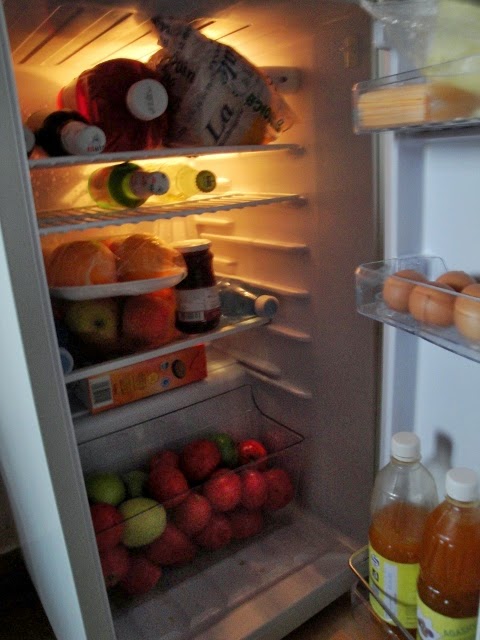Let me continue sharing my experience with Rwandan food to build upon my last post about breakfast.
Final product! You
can see the banana chips in this picture.
There is also rice, a staple, as well as a flavorful sauce made with
eggplant, carrots and cabbage. Every
meal is very starchy with at least two different forms. Here it is ‘only’ the banana chips and rice,
but they also commonly have [mushy, overcooked] spaghetti or cassava bread,
which I will explain later. It is
interesting to me, because in Ghana there was a similar starchy consistency to
the meals, but people tended to eat one large meal only. Here people pile their plates very full for
all meals.
Another
example of a typical meal. The sauce is
made with eggplant, carrots, and peppers.
Avocado is on the side along with chips made from potatoes, so your run
of the mill steak fries. They are just
as likely to boil the potatoes; it is only by coincidence that both plates have
fried foods.
Here
is dodo, which we went out to garden next to the house to cut and then brought
it to use for a sauce. It is great to
eat green vegetables as seems to be a bit uncommon. The leaf is consumed and is very flavorful, a
bit bitter, similar to spinach, but with an herby flavor. For this meal it was boiled and some
groundnut (peanut) flour was added to the sauce.
.jpg) |
| Cassava bread |
We also had cassava bread to eat with the sauce. Cassava flour is mixed with water and boiled together (all unmeasured, of course). It is then stirred and stirred until it becomes the consistency of spongy dough. It is difficult to stir so it is held between the feet to keep it still and two hands use the spoon. I can think of nothing in the US that is eaten with this texture and I believe it is an acquired taste, but I had similar food often enough in Ghana that I really love it. People traditionally eat with their hands to scoop up sauce rather than using utensils.
Final product!
The bread on the
upper left is cassava bread, the sauce over the rice in the upper right are
made with beans and cabbage. Beans are
very common here and eaten with almost every meal. Rwandans do not approve of my portion
size. They are constantly encouraging me
to get up and have more, asking if I do not like the food or asking if I wish
to lose weight. But the truth is, after
a meal I am stuffed. I don’t know how
they do it!
Meat is rarely eaten in Rwanda. It is more commonly consumed to entertain
guests, so we had it often with the Benebikira sisters, but otherwise not more
than once a week. Common meats are goat,
chicken, and beef. We had fish
once. I believe goat is most commonly
eaten of all meat.
And lastly is akabanga! This little gem is Rwandan hot
sauce. It is sold in containers about
two inches tall and is dispensed with a dropper. That’s right, a dropper, because so little is
needed before your mouth is on fire. In
fact, we are advised told to wash hands after handling it to prevent from us
burning our eyes if we touch them after using the dropper.
.jpg)


.jpg)
.jpg)
.jpg)

.jpg)
+(478x640).jpg)

.jpg)
.jpg)
.jpg)
.jpg)
.jpg)
.jpg)
.jpg)
.jpg)
